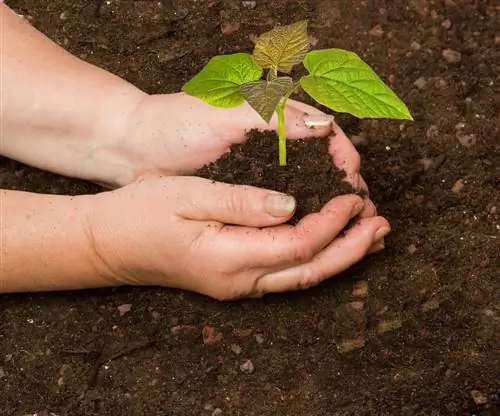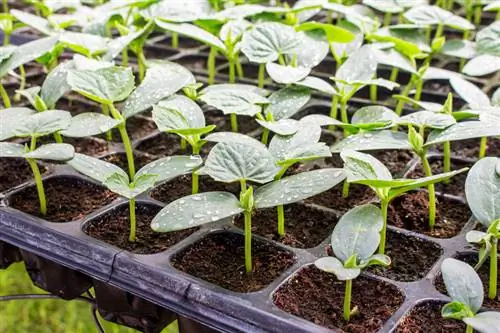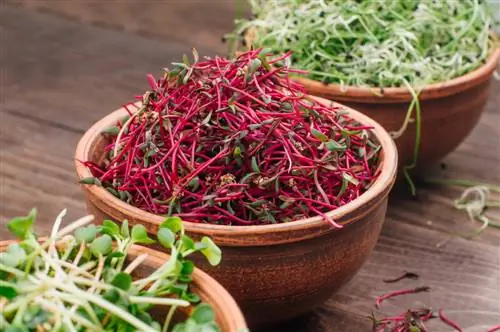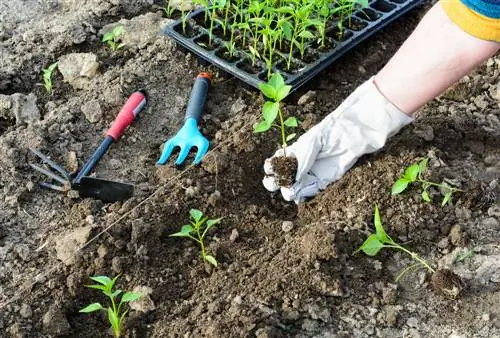- Author admin [email protected].
- Public 2023-12-16 16:46.
- Last modified 2025-01-23 11:21.
Blue or purple flower spikes up to 40 centimeters long in spring, later huge heart-shaped leaves - a bluebell tree is really impressive. Buying a large paulownia is a real investment, but seedlings can be purchased quite cheaply.
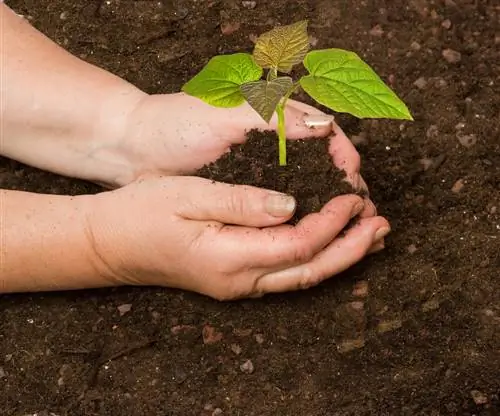
Where can I find paulownia seedlings and when do I plant them?
To buy Paulownia seedlings, you should visit a well-stocked nursery or nursery or search online. When purchasing, make sure you use the correct botanical name Paulownia tomentosa. The best time to plant is spring after the Ice Saints.
Where can I get high-quality seedlings?
You can get high-quality bluebell trees in pots or as containers from a well-stocked nursery or tree nursery. Young plants are also available online. However, the price and size of the seedlings can vary significantly. The price differences are also due to the quality and type of paulownia. So make sure you get the correct botanical name. The Chinese bluebell tree is traded as Paulownia tomentosa.
When and how do I plant a bluebell tree?
The ideal time to plant a Paulownia tomentosa is spring after the Ice Saints. The tree only becomes hardy when it is older. You may want to keep it in a bucket for the first year. Then find a large enough space for this fast-growing tree. It should be sunny, warm and protected from the wind.
Dig a planting hole twice the size of the root ball. If the soil is clayey and heavy, loosen it with a little sand. If the soil is too acidic, you can adjust it with appropriate fertilizer. Plant your bluebell tree just as deep in the soil as it was previously in the pot/container and water it well.
How do I care for paulownia seedlings?
A young, freshly planted paulownia needs a regular supply of water. Later its roots reach deep enough that it can support itself. In the first few winters you should give the tree winter protection. Otherwise the young shoots risk freezing. Overwintering in a greenhouse or winter garden is recommended.
The most important things in brief:
- best planting time: spring
- sensitive to frost
- Planting out only recommended at the age of 1 to 2 years (rough areas: 3 to 4 years)
- Location: warm, bright and protected from the wind
- Soil: dry to slightly moist, well-drained, nutrient-rich
- best time for cuttings: autumn
Tip
You will receive seedlings in different sizes, the smaller they are the cheaper, but the plants are also more sensitive.

